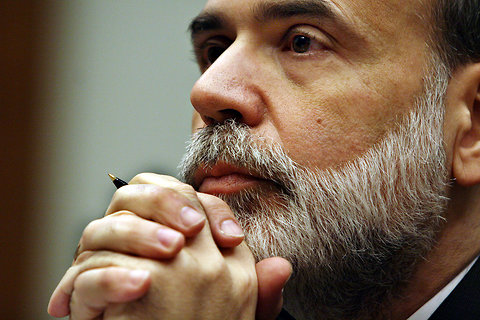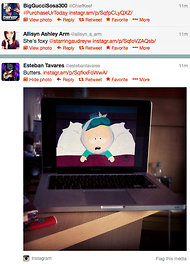Thanks to their plans, the birth, whenever it happens — any day now, if the tabloids are to be believed — will be a spectacle unlike any other in the modern media age, complete with sweeping helicopter shots of St. Mary’s Hospital in Paddington, London, and Buckingham Palace. “This is probably the most anticipated birth since the dawn of Twitter,” said Jon Williams, the foreign editor for ABC News.
When Prince William and his brother Harry were born in the 1980s, tweets were just sounds made by birds and 24-hour news channels were a novelty. In the 30 years since, media companies have become much better at preparing for big events — sports matches, murder trials, elections, even fashion shows — and capitalizing on them through wall-to-wall coverage on television, commemorative editions of newspapers and magazines, and advertiser-supported special sections on Web sites.
Now, with Prince William’s child on the way, scores of reporters and photographers are on standby in London. ABC News has a whole royal baby section of its site sponsored by Nestlé, plus an online guest book for visitors to sign. NBC News has a site called RoyalBabyGuess.com, asking for predictions about name, birth time and weight. To make it more fun, the people whose guesses come closest might be mentioned on the “Today” show. “We’re going to do our best not to intrude and to be respectful, but also to cover it for people who are really interested,” said Mark Lukasiewicz, the senior vice president for NBC News Specials.
While news organizations will undoubtedly be criticized for spending too much time covering a famous childbirth, executives say there is ample public interest in what will most likely be the quintessential “good news” story, a reprieve of sorts after weeks of stories about the George Zimmerman trial in the United States and uprisings overseas. Not only will the birth be historically consequential, Mr. Williams said, it will also be inherently relatable because “the birth of a baby is something that every family can identify with.”
Including the long wait.
“The big news is still that there is no news,” Tom Sykes of The Daily Beast wrote on the site’s “Royal Baby Watch” live blog on Sunday. For days now, Mr. Sykes and others have been swatting away rumors about the duchess, formerly known as Kate Middleton, checking into the hospital and being in labor.
News executives say they expect to be notified when she does actually arrive, most likely through a side entrance, at the hospital. The main vantage point for camera crews is along a narrow street outside the main entrance to the private wing where the duchess will be — “a typically charming, difficult London street” as Mr. Lukasiewicz described it. With so many foreign broadcasters, including those from throughout the Commonwealth, jockeying for positions there, each news outlet has only a couple of feet of space. “So we’re going to have a narrow correspondent at that spot,” he joked.
More rumors will surely zip across social networks once the duchess is in labor, and news organizations will have to exercise caution. “We will wait for the Palace to confirm,” said Paddy Feeny, a spokesman for BBC News. “This is one announcement where guessing won’t do.”
The birth’s confirmation process is rooted in tradition, but it will be televised in high-definition, which was something else that didn’t exist the last time there was a royal baby. The duchess’s doctors will sign a birth notice. The notice will be hand-carried to a car. The car will be driven to Buckingham Palace. Then the notice will be placed on an easel in the forecourt of the palace, informing the world of the baby’s birth and possibly his or her name.
All the while, a news helicopter belonging to the British broadcaster Sky News, whose pictures will be shared with every network, will be hovering overhead, almost as if covering a slow-speed car chase. But that’s assuming the helicopter, stationed south of the city, can get there in time. News executives expect to get five to 10 minutes notice, at most, before the car starts on its short journey. A Sky News spokeswoman, aware that the world’s news media are counting on its coverage, said she anticipates that the crew will have “enough time to get airborne.”
Sky News and the BBC will also have cameras at the palace to take close-ups of the birth notice. “We are praying for good visibility and no rain,” Mr. Feeny said.
News producers have been holding meetings with palace officials about the staging of the announcement for the last several months. “It’s gotten down to the level of detail that three minutes after the notice has been put on the easel, they’ll cut off the signal,” said one producer involved in the planning, who insisted on anonymity to protect important relationships with the palace.
That producer and several others said they had been assured that the baby’s birth would be announced only between 8 a.m. and 10:30 p.m. in London, or between 3 a.m. and 5:30 p.m. in New York. Sometime later, photographers will have their chance to see the family as they leave the hospital.
Some news organizations, of course, are almost shrugging off the baby drama. CBS News, which has sought a reputation as the most serious American network news division, will depend on its reporters already in London to cover the news, a spokeswoman said.
NBC and ABC, on the other hand, are sending over anchors. The “Today” news reader Natalie Morales flew to London on Sunday. The “Good Morning America” weekend anchor Bianna Golodryga has been there for nearly a week, and she will be joined sometime soon by a regular on the weekday edition, Amy Robach. Mr. Williams said Ms. Robach will board a plane bound for London “as soon as Kate goes into the hospital.”

Article source: http://www.nytimes.com/2013/07/15/business/media/with-a-royal-baby-due-news-outlets-are-on-high-alert.html?partner=rss&emc=rss

 Updating…
Updating…